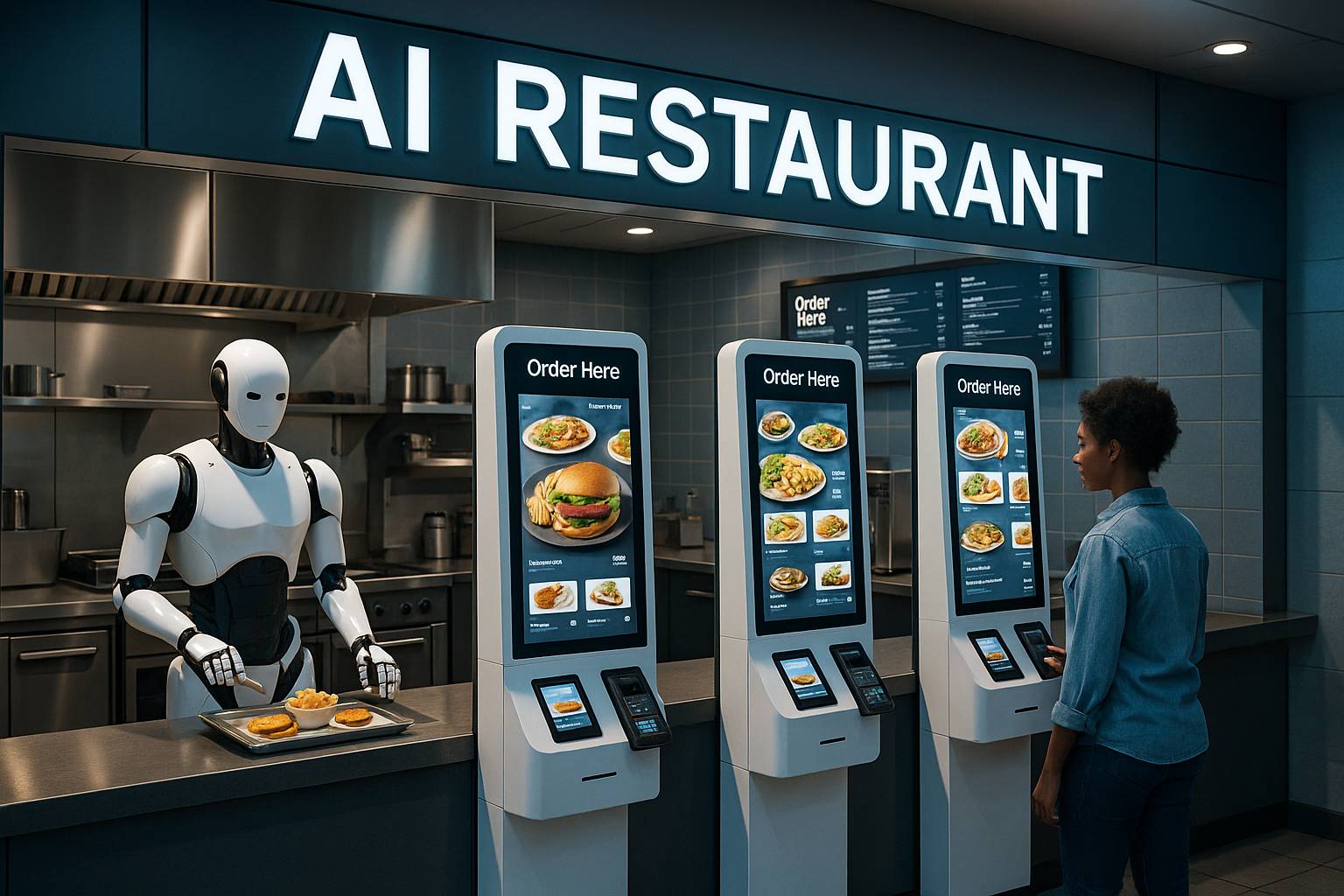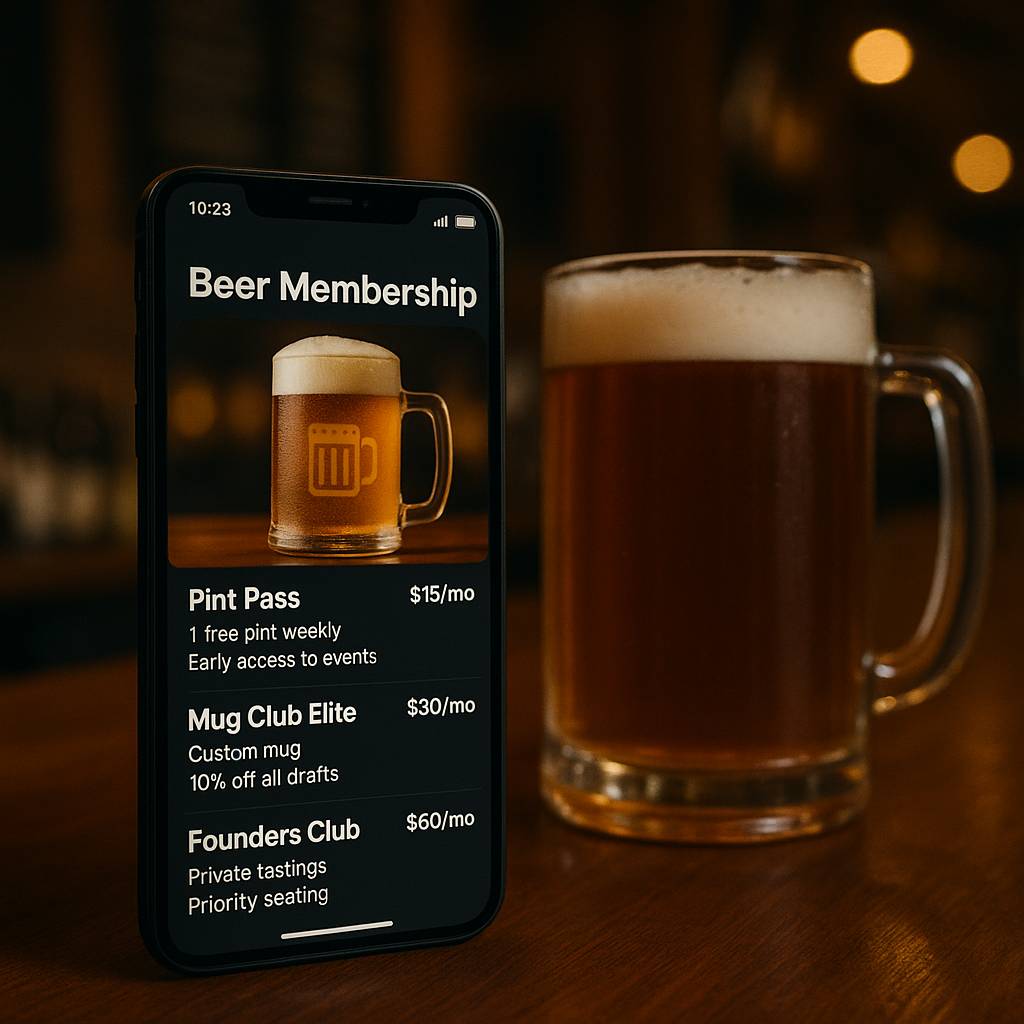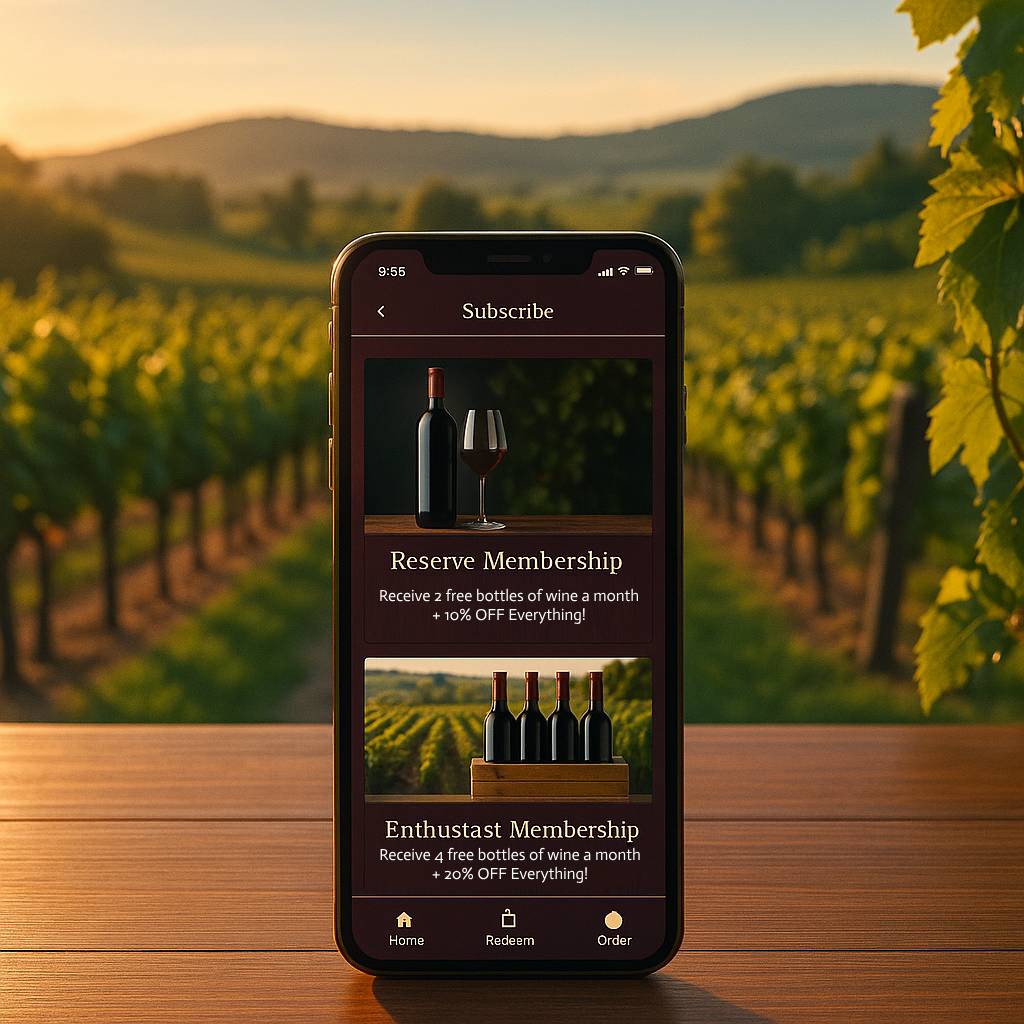The restaurant industry is being redefined by artificial intelligence. From robotic kitchen assistants to smart phone answering systems, AI in restaurants is no longer a futuristic concept; it’s today’s competitive advantage. As costs rise and staffing gets harder, more operators are turning to AI restaurant software to streamline operations, boost marketing results, and improve the customer experience. Whether you're running a fast-casual spot or a multi-location franchise, understanding how AI for restaurants works is essential to staying ahead.
TL;DR: How AI Is Disrupting the Restaurant Industry
| Feature | Impact on Restaurants |
|---|---|
| AI Phone Answering System | Handles calls 24/7, improves order accuracy |
| AI Restaurant Ordering | Speeds up service, boosts upsells |
| AI Restaurant Software | Automates POS, inventory, loyalty, and staffing |
| AI for Restaurant Marketing | Increases ROI through smart targeting and personalization |
| AI and Food Automation | Cuts labor costs, reduces waste, enhances consistency |
What Is an AI Restaurant?
An AI Restaurant integrates artificial intelligence tools across its operations, from kitchen automation and customer service to dynamic pricing and marketing. These restaurants use machine learning and natural language processing to optimize staffing, reduce waste, personalize promotions, and streamline service.
| Component | AI Functionality |
|---|---|
| Front-of-House | Chatbots, ordering kiosks, phone assistants |
| Back-of-House | Kitchen robots, inventory tracking, demand forecasting |
| Marketing | Predictive analytics, personalized ads, email automation |
| Operations | Dynamic scheduling, menu engineering, loyalty optimization |
Cali Xpress by Flippy
Located in Pasadena, Cali Xpress by Flippy is one of the first restaurants in the U.S. powered almost entirely by AI and robotics. Partnering with Miso Robotics, the restaurant utilizes Flippy, an AI-powered robotic arm that cooks burgers and fries with surgical precision.
- No human cooks: Flippy handles the fryer and grill.
- AI phone answering system: All calls are managed by a smart voice assistant.
- AI restaurant ordering: Customers place orders through a touchscreen or your restaurant subscription mobile app , all powered by machine learning.
- Restaurant AI software handles everything from real-time food prep optimization to on-the-fly staffing decisions.
It’s not just hype - it’s a glimpse of the near-future standard.
AI Use Cases That Matter
1. AI Phone Answering System for Restaurants
Tired of missed calls and botched orders? AI phone answering systems are now capable of:
- Taking reservations
- Answering FAQs
- Processing orders
- Offering upsells
These systems are trained on real restaurant data and voice models to sound human. Brands like ConverseNow and SoundHound are already powering thousands of locations.
| Problem | Solution |
|---|---|
| Missed calls during rush hours | AI answers 24/7, takes multiple calls at once |
| Language barriers | Multilingual models eliminate confusion |
| High labor costs | Reduces need for dedicated phone staff |
2. AI Restaurant Software for Operations and Analytics
Smart restaurant AI software platforms like Presto, Toast, and OpenTable use AI to:
- Forecast staffing needs
- Automate ordering and upselling
- Monitor sentiment from customer reviews
- Track inventory in real time
AI restaurant software is particularly powerful when integrated into POS systems. You can reduce over-ordering, improve menu efficiency, and adjust prices dynamically based on demand or seasonality.
3. AI for Restaurant Marketing
Marketing has gone from guesswork to precision. AI for restaurant marketing does the heavy lifting by:
- Segmenting customer data
- Creating personalized campaigns
- Running A/B tests at scale
- Predicting customer churn
Imagine sending a unique offer to a customer based on their past visits, order preferences, and even the weather. That’s not a marketer - it’s a machine learning model pulling insights from your CRM.
4. AI Restaurant Ordering Systems
AI restaurant ordering has evolved from basic kiosks to full NLP-based ordering. Whether on a mobile app, website, or self-serve kiosk, AI can:
- Understand customizations (“no onions, extra spicy”)
- Recommend items based on preferences
- Handle large orders with zero errors
Domino’s and McDonald’s are already ahead in this game, using AI to shave seconds off each transaction while increasing upsell rates.
Table: AI Restaurant Stack Breakdown
| Area | AI Tool/Function | Example Platform |
|---|---|---|
| Ordering | NLP, upsell prediction | Google Dialogflow, OpenAI |
| Customer Service | Voice assistant, chatbot | SoundHound, ConverseNow |
| Operations | Forecasting, demand planning | Presto, Toast, xtraCHEF |
| Marketing | Predictive analytics, personalization | Zenreach, Mailchimp + AI |
| Kitchen | Robotic automation, prep sequencing | Miso Robotics (Flippy) |
Why AI for Restaurants Is Becoming a Necessity
Let’s be real this isn’t about being trendy. AI for restaurants is becoming necessary due to:
- Labor shortages: AI fills staffing gaps without the overhead.
- Higher customer expectations: Speed, accuracy, and personalization are now table stakes.
- Tighter margins: AI helps reduce waste, increase efficiency, and optimize pricing.
Not adopting AI is no longer a neutral choice - it’s a liability.
How Artificial Intelligence Restaurant Tools Increase Profits
It’s not just about cost-cutting. AI actually drives revenue:
| Metric | Without AI | With AI |
|---|---|---|
| Average Wait Time | 12 mins | 6 mins |
| Order Accuracy | 89% | 98%+ |
| Table Turnover Time | 45 mins | 35 mins |
| Staff Needed | 8–10 | 5–7 |
AI and Food: From Menus to Meal Prep
AI and food are a surprisingly powerful combo. Some use cases include:
- AI-generated menus: Based on trends, seasonality, and profitability.
- Recipe optimization: AI suggests modifications to reduce cost or allergens.
- Food safety monitoring: Sensors detect spoilage or contamination risks.
- Smart inventory: Auto-reordering before you run out.
And let’s not forget how AI is also used in delivery and packaging - optimizing routes, packaging types, and estimated times of arrival.
What the Future Looks Like for Restaurant AI
We’re approaching a world where the AI restaurant is fully autonomous. Here’s what’s coming:
- Emotion detection: Adjust service based on facial expressions.
- Hyper-personalization: Entire meals crafted to individual biometrics.
- Voice-to-table ordering: Skip screens entirely.
- Zero-touch kitchens: Full robotic line cooks, monitored by AI.
It’s not sci-fi. It’s in pilot programs across Japan, the UAE, and even fast-growing franchises in the U.S.
Final Thoughts
AI in restaurants is no longer optional. It’s how you scale faster, serve better, and survive the next disruption. Whether you’re a small café or a national chain, integrating artificial intelligence restaurant tools today will determine your success tomorrow.
Frequently Asked Questions
What is an AI restaurant?
An AI restaurant uses artificial intelligence to automate ordering, cooking, customer service, and marketing to improve efficiency and profitability.
How does AI help restaurant marketing?
AI for restaurant marketing analyzes customer data, predicts behavior, and runs automated, personalized campaigns that drive better results.
Can AI really replace restaurant staff?
It can reduce staffing needs by handling repetitive or predictable tasks - like answering phones, taking orders, and prepping food.
What is an AI phone answering system for restaurants?
It’s a voice-powered system that answers calls, takes reservations or orders, and handles FAQs, all without human intervention.
Is it expensive to implement restaurant AI?
Costs vary, but many tools (especially SaaS platforms) are affordable and pay for themselves through increased efficiency and higher sales.
What is Cali Xpress by Flippy?
Cali Xpress is an AI-powered restaurant in Pasadena using robotics (Flippy by Miso Robotics) for food prep and AI software for customer service and ordering.



